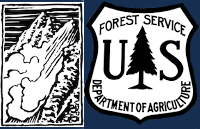20-21
Natural avalanche crown observed on October 19th along the side of The Great One couloir near Fairy Lake in the northern Bridger Range.
Photo: B. VandenBos
Forecast link: GNFAC Avalanche Forecast for Thu Oct 22, 2020
Natural avalanches near Fairy Lake
Two parties skiing near Fairy Lake on October 19th observed several natural avalanches that likely broke the day before (Sunday, Oct 18th). The avalanches broke in areas of wind drifted snow.
Small natural avalanches in windblown snow near Fairy Lake, observed on October 19th.
Forecast link: GNFAC Avalanche Forecast for Thu Oct 22, 2020
Snow distribution high in the Northern Gallatin Range on October 19th.
Photo: G. Antonioli
October snow drifting on Mt. Blackmore after heavy snowfall and strong west winds on October 19th.
Photo: G. Antonioli
A runner sent this photo from Octoberr 16th in the Absarokas... "The old snow has created a bed surface that is a cause for concern as more snow falls, the wind continues to blow, and temperatures drop. Also the areas where the wind has cross loaded into thick slabs is a bit worrisome. Those are easy to see in the photos." Photo: J. Dalimata
GNFAC Avalanche Forecast for Mon Oct 19, 2020
<p>Avalanche season is here. While most slopes still have rocks and grass poking through a shallow coat of fresh snow, especially at lower elevations, there are some higher elevation slopes with dense, wind drifted snow that hold the potential to avalanche. Right now the hazard is still localized. Slopes where new snow is drifted deeper may provide enough coverage to eke out a few turns, but are also the most likely place to trigger an avalanche. </p>
<p>Avalanches don’t discriminate - they don’t care if you’re trying to get a head start on the ski season, looking for early season ice to climb, or out scouting for game before the start of rifle season. Either choose to avoid steep, snow covered slopes entirely or prepare for avalanches like you would in the middle of winter. </p>
<p>Bring a partner, carry rescue gear (beacon, shovel and probe) and travel one at a time in avalanche terrain. Cracking and collapsing of the snow is bulls-eye information that the snow is unstable. Avalanches will likely be small, but the many exposed rocks and hazards make small slides season ending at best and deadly at worst. </p>
<p>We are preparing for winter, scheduling avalanche classes, and setting up weather stations. If you have avalanche, snowpack or weather observations to share. Please submit them via our <a href="https://www.mtavalanche.com/node/add/snow_observation"><strong><u>websi…;, email (<a href="mailto:mtavalanche@gmail.com"><strong><u>mtavalanche@gmail.com</u></str…;), phone (406-587-6984), or Instagram (#gnfacobs).</p>
Upcoming Avalanche Education and Events
See our education calendar for an up to date list of all local classes. Here are a few select upcoming events and opportunities to check out:
Doug will do an online Forecaster Chat about early season snowpack and avalanche accidents on Thursday, November 5 at 6 p.m. It is hosted by Uphill Pursuits and details will be posted soon.
